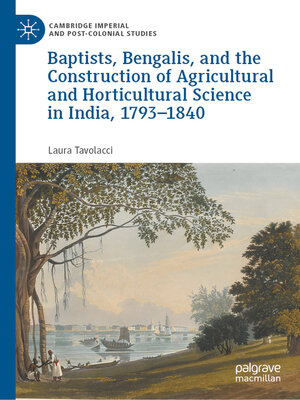Baptists, Bengalis, and the Construction of Agricultural and Horticultural Science in India, 1793–1840
ebook ∣ Cambridge Imperial and Post-Colonial Studies
By Laura Tavolacci

Sign up to save your library
With an OverDrive account, you can save your favorite libraries for at-a-glance information about availability. Find out more about OverDrive accounts.
Find this title in Libby, the library reading app by OverDrive.



Search for a digital library with this title
Title found at these libraries:
| Library Name | Distance |
|---|---|
| Loading... |
The Agricultural and Horticultural Society of India was founded in 1820 by an English Baptist missionary, William Carey. He was part of a network of missionaries centred at Srirampur (Serampore), the Danish settlement close to Calcutta. This book explores the ways that missionaries included plants in their projects of proselytization to better understand the origins of this scientific society. It includes an investigation of the farms and gardens at each mission station, the missionaries’ work with indigo plantations, and different scientific projects leading up to the creation of the agricultural society. Amidst all of this, plants became an important target and sign of moral improvement, marking a sort of ‘moral frontier’ which reiterated racial hierarchies. Nevertheless, various entanglements with Bengali converts, gardeners (malis), and the elite bhadralok class also impacted the missionary vision. In the initial years of the scientific organisation, missionaries and their interlocutors upheld a romantic and hierarchical vision of agrarian society that mixed gardening with large-scale agriculture – but, an economic depression in 1833, followed shortly by William Carey’s death in 1834, ended this composite vision. The Society began to focus instead on the production of more remunerative agricultural cash crops, like sugar and cotton, over horticultural crops like vegetables and fruit trees.







